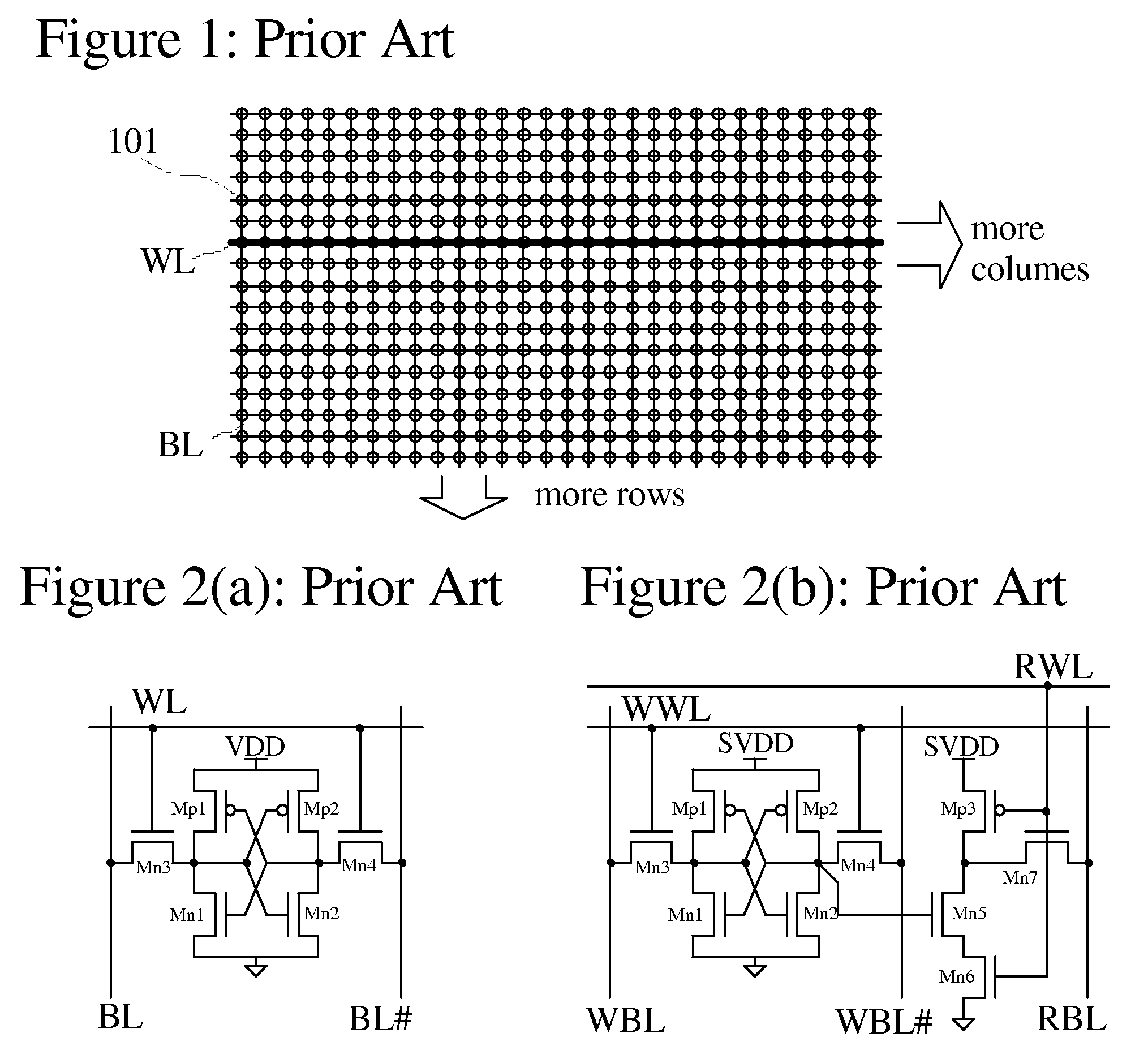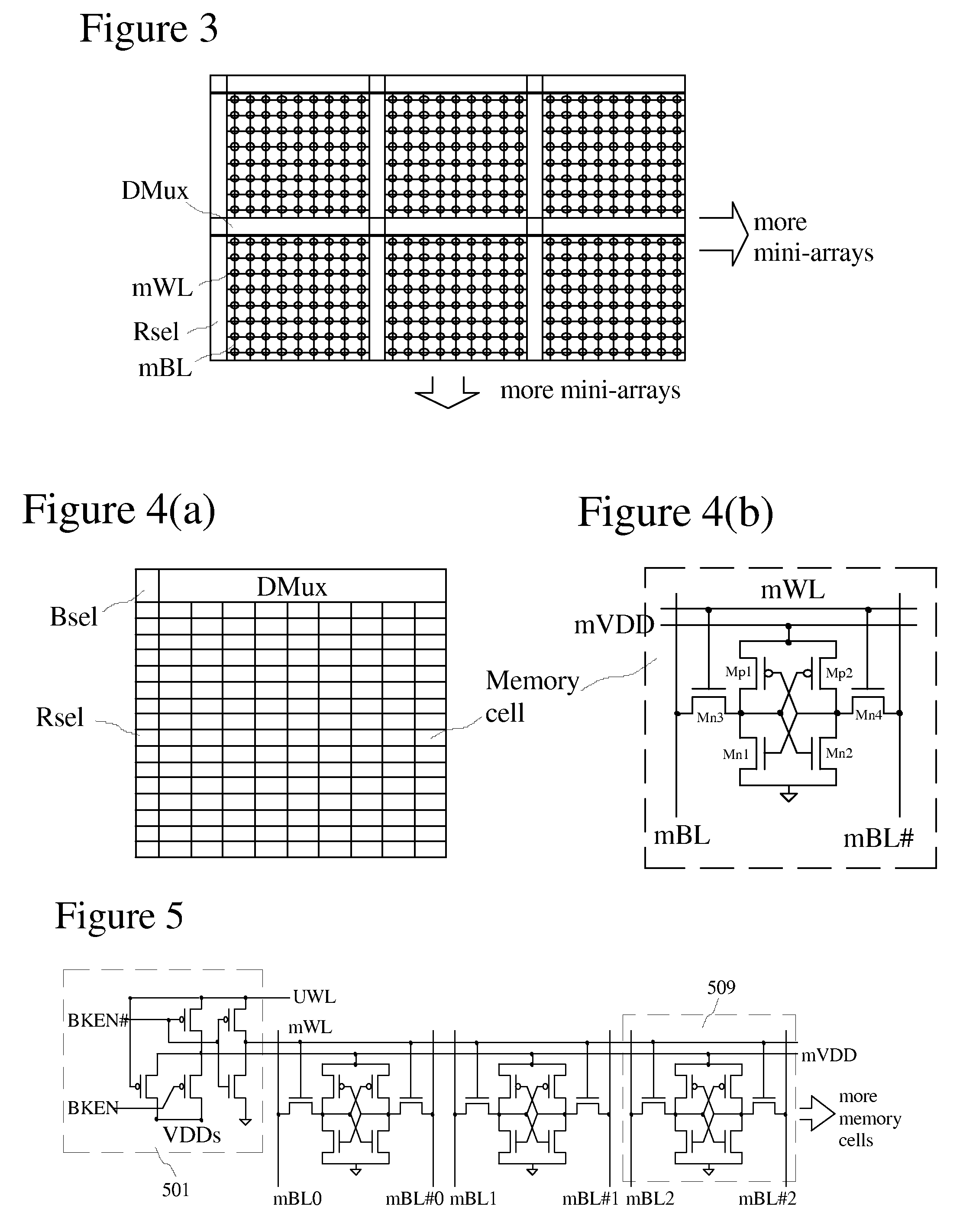Ultra-low power hybrid sub-threshold circuits
a hybrid, low-power technology, applied in the direction of information storage, static storage, digital storage, etc., can solve the problems of preventing their practical use, low voltage, and technology that has yet to be implemented in the field of ultra-low-power integrated circuits
- Summary
- Abstract
- Description
- Claims
- Application Information
AI Technical Summary
Benefits of technology
Problems solved by technology
Method used
Image
Examples
Embodiment Construction
[0021]To facilitate understandings of the present invention, we will start with a specific application in Static Random Access Memory (SRAM) design as an example to demonstrate the problems with existing approaches and the principles of the present invention.
[0022]Conventional SRAM is designed as a two dimensional array of memory cells as illustrated by the symbolic view in FIG. 1. In this figure, a memory cell (101) is represented symbolically by a circle, word lines (WL) are represented by horizontal lines, and bit lines (BL) are represented by vertical lines. For clarity, we are using simplified symbolic views in our discussion. In reality, each memory cell can have multiple word lines and multiple bit lines.
[0023]To read data from a conventional memory array, one word line (WL) is activated (illustrated by a bold line in FIG. 1) to turn on all the memory cells along one horizontal row. Each selected memory cell discharges one vertical bit line so the data stored in selected memo...
PUM
 Login to View More
Login to View More Abstract
Description
Claims
Application Information
 Login to View More
Login to View More - R&D
- Intellectual Property
- Life Sciences
- Materials
- Tech Scout
- Unparalleled Data Quality
- Higher Quality Content
- 60% Fewer Hallucinations
Browse by: Latest US Patents, China's latest patents, Technical Efficacy Thesaurus, Application Domain, Technology Topic, Popular Technical Reports.
© 2025 PatSnap. All rights reserved.Legal|Privacy policy|Modern Slavery Act Transparency Statement|Sitemap|About US| Contact US: help@patsnap.com



